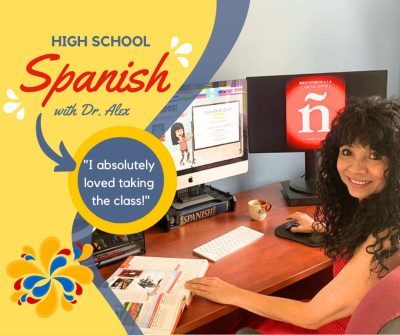
Portfolio Review Form – for certified teacher use only
The West Virginia Code does not specify guidelines for the portfolio itself, and neither does CHEWV set forth such guidelines. The information we provide is in response to many requests from CHEWV members to publish information about the development of a portfolio that meets West Virginia’s requirements. This information is only intended as a recommendation to broaden your knowledge in preparing a unique and useful assessment tool.
Please note that the portfolio does not get turned in to the county, but rather the narrative provided by the certified teacher is turned in and/or kept on file.
West Virginia law requires that your evaluator indicate to the county superintendent whether your child is working at his or her ability level. You and your evaluator should agree on how the ability level is to be determined. Ideally, this would be done at the start of the academic year. Once this has been established, you and your evaluator should clarify the skills and abilities that are expected at your child’s academic ability level. Documents such as state curriculum frameworks, scope and sequence charts from curriculum publishers, or listings of what a child needs to know at particular grade levels may provide helpful guidelines. A book that may also prove helpful is What Your Child Needs to Know When by Robin Scarlata. She has analyzed the objectives and scope and sequence for several achievement tests and has developed a grade-by-grade, subject-by-subject list of what a child could be expected to know.
Developing the Portfolio
Portfolios are developed by collecting information that is relevant and meaningful to create a picture of your child’s academic progress. The portfolio should address each of the subject areas and should include a wide range of student work, including both typical and best work. A collection of only best samples would not provide an adequate basis for evaluation. Basically, the portfolio should contain student work, checklists, and anecdotal notes. At the bottom of this page CHEWV has added a gallery of portfolio ideas to help in giving you suggestions and ideas of putting together your own portfolio.
Samples you might include in a portfolio
- Activities that demonstrate the completion of a topic of study, such as a report
- Projects (or photographs of the projects) on topics of study
- Graphs of reading or math drill rates
- Audio recordings of oral reading
- Video recordings of oral presentations
- Worksheets or workbook pages
- Tests if applicable
- Written compositions and/or journals
- Reading lists
- Parent/teacher observations and anecdotal records
- Pictures from field trips
- Blog entries featuring educational activities or child’s work
- Sample worksheets throughout the year
Choosing an Evaluator
The evaluation is to be done by a certified teacher – who will ultimately determine what he/she will want to see in order to evaluate the progression of skills. Therefore, it is prudent to make contact with your evaluator early in the school term.
Submitting the Narrative
The West Virginia Code specifies that a narrative is to be provided to the county superintendent indicating that a portfolio of samples of the child’s work has been reviewed and that the child’s academic progress is or is not in accordance with the child’s abilities. While one subject may be evaluated at a particular ability level, other subject areas may require evaluation at other levels. Also, West Virginia law does not require evaluation of social experiences. Your evaluator should focus solely on academic progress.
If the child has not made acceptable academic progress according to the child’s abilities, the next step is that the instructor “shall initiate a remedial program to foster acceptable progress.”
The narrative must also include a statement about the child’s progress in each of the five required subjects – reading, language, mathematics, science and social studies – and is to note any areas which, in the professional opinion of the reviewer, show need for improvement or remediation.
Since the portfolio reviewer must note “ improvement or remediation” needed for each of the five subjects, this could mistakenly imply that the child has not made acceptable progress overall. In order to avoid confusion with county superintendents on this issue, we recommend the following approach.
If the evaluator believes that the student has successfully met the standard of “academic progress for the year… in accordance with the child’s abilities” for all five subject areas inclusive, a clear statement to that effect should be included in the portfolio narrative. If the evaluator then goes on to discuss specific subjects needing improvement, we recommend not using the terms “remedial” or “remediation”, so as not to confuse the issue of the evaluator’s overall assessment of acceptable progress. Conversely, if the evaluator determines that, in his or her professional opinion, the child did not meet the standard of achievement according to ability, a clear statement to that effect should be included, along with identification of the subject areas needing remediation.
Portfolio Limitations
- Managing portfolios is more involved and complex than testing. They require much effort, thought, and detailed work in their preparation.
- Portfolio assessments entail human judgments. The progress of your child’s academic skills is at the discretion of your evaluator.
- Weaknesses and learning gaps are more difficult to ascertain because of the nature of the portfolio.
Portfolio Benefits
- Portfolios provide an opportunity to give a broad picture of your child’s learning and academic progress.
- Portfolio evaluation enables those who have difficulty with testing to give evidence of academic learning.
- Portfolios do not compare your child with other children.
- Portfolio assembly affords you the opportunity to examine results of your instruction, both in detail and in retrospect.
- Portfolio development assures a built-in audience (the evaluator) for your child, and can be very motivating for him.
What to Do If the Child Does Not Make “Acceptable Progress”
As stated above, if the child has not progressed according to his or her ability, the homeschool instructor must initiate a remedial program to foster acceptable progress. In the event that the child does not achieve acceptable progress for a second consecutive year, the homeschool instructor must submit to the county superintendent additional evidence that appropriate instruction is being provided. This must be done whether or not an assessment is due to the county for that grade level. The law does not specify exactly what the additional evidence is, but possibilities might include additional information about the curriculum being used, tutoring services being utilized, or even standardized testing. Or it may include documentation from special needs assessments.
~~~
Regardless of the assessment option you choose, the main concern should be the amount of worthwhile information you receive about your child’s academic progress. Assessment results should help you determine how best to move your child along a continuum of skills toward a higher degree of proficiency. Choosing a method simply to meet the requirements of the law in the easiest way possible would be cheating ourselves and our children of some valuable feedback. While parents do know their children better than a portfolio evaluator or a testing instrument, it is natural to be biased and subjective in our evaluations. We invest far too much time, effort and resources into our children’s education to overlook an opportunity for evaluating not only our children’s progress, but also our teaching methods.
CHEWV’s intent is to broaden your knowledge of the assessment methods available to us by West Virginia law. The law is very vague in many areas, and it is not CHEWV’s intent to regulate these areas or to define specifics. Please consider them as recommendations as you seek an appropriate assessment tool.
Gallery of Portfolio Ideas
Each portfolio is a personal snapshot of your student’s abilities, strengths, and weaknesses.
This gallery of ideas will help in creating the perfect vehicle to showcase a homeschool year.
Click on each gallery pic for the how-to instructions or example.

Creating a Portfolio by Waldorf-Inspired Learning

Creating a Portfolio by The GEN2 Homeschooler






